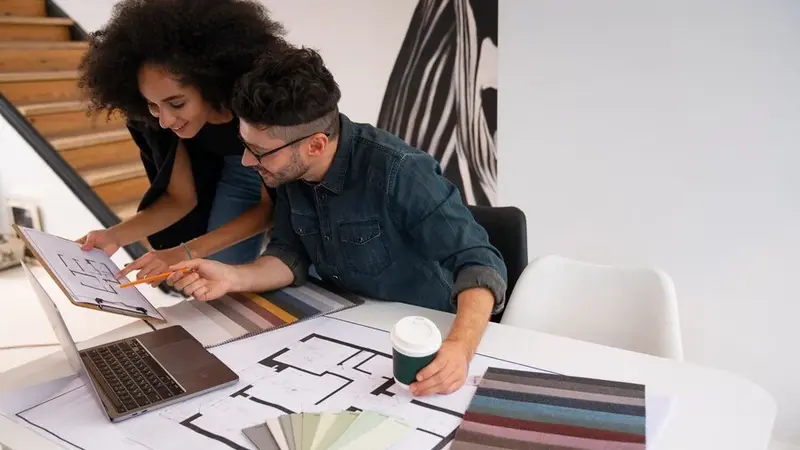Creating a memorable space is more than just aligning furniture and picking the right colors. It’s about crafting a story, an experience that leaves a lasting imprint on those who enter. Interior designers have the unique ability to turn ordinary rooms into extraordinary experiences that linger in the minds of clients and guests.
Here’s how you can leverage your skills to create spaces that are not just beautiful, but also unforgettable.
The Art of Storytelling Through Design
Crafting a Narrative
Every space tells a story. Whether it’s a cozy nook that whispers tales of relaxation or a grand living room that speaks of sophistication, the narrative is key. To incorporate storytelling elements, consider the following:
- Theme Development: Establish a theme that resonates with the client’s personality or the intended purpose of the space.
- Personal Touches: Include items that tell a personal story, such as family heirlooms, travel souvenirs, custom-made pieces, or picture framings such as those in Utah.
- Sequence and Flow: Arrange furniture and decor in a way that guides the visitor’s eye and creates a visual storyline.
Examples
- Rustic Retreat: Use natural materials, vintage furnishings, and earthy colors to create a story of escape and tranquility.
- Urban Chic: Combine sleek lines, modern art, and minimalist decor to narrate a tale of contemporary elegance.
Utilizing Trends with Timelessness
Balancing Act
Trends come and go, but timeless design endures. The key is to strike a balance between the two. Here’s how:
- Foundation of Classics: Start with classic, enduring pieces that form the backbone of the space.
- Trendy Accents: Add trendy elements that can be easily updated or replaced as trends evolve.
- Modern Farmhouse: Combines the enduring charm of rustic elements with the modern appeal of sleek lines and contemporary fixtures.
- Mid-Century Modern: A harmonious blend of vintage pieces with bold, modern accents.
Integrating Sustainable Design
The Importance of Sustainability
In today’s world, sustainability is not just a buzzword; it’s a responsibility. Interior designers have the opportunity to make a significant impact by incorporating eco-friendly practices into their designs. Sustainable design goes beyond merely choosing green products; it’s about creating spaces that are energy-efficient, healthy, and considerate of the environment.
Practical Steps
Implementing sustainable design can be straightforward and rewarding. Consider these practical steps:
- Use Reclaimed Materials: Incorporate reclaimed wood, recycled glass, and other salvaged materials to reduce waste and encourage reuse.
- Energy-Efficient Lighting: Choose LED lighting and smart controls to minimize energy consumption.
- Non-Toxic Finishes: Opt for paints, finishes, and materials that emit low or zero VOCs (volatile organic compounds) to ensure better indoor air quality.
- Water Conservation: Install water-saving fixtures and consider xeriscaping for outdoor areas to reduce water usage.
The Psychology of Memory and Design
Connection Between Design and Memory
The design has a profound impact on memory. The colors, textures, and layouts of a space can evoke emotions and create lasting impressions. To design spaces that evoke positive, lasting memories, consider:
- Color Psychology: Use colors that evoke the desired emotions (e.g., blues for calm, reds for energy).
- Sensory Engagement: Incorporate elements that engage multiple senses, from tactile fabrics to fragrant flowers.
- Personalization: Tailor the design to the client’s personal history and preferences.
Tools and Technologies for Memorable Design
Modern Tools
The advent of technology has provided designers with an array of tools to enhance the design process.
- 3D Rendering Software: Tools like SketchUp and AutoCAD allow for realistic visualizations before implementation.
- Augmented Reality (AR): Apps like Houzz’s AR feature enable clients to see how different elements will look in their space in real-time.
- Smart Home Integration: Incorporate smart home devices for a blend of convenience and cutting-edge technology.
Tips for Incorporation
- Use 3D rendering to experiment with different layouts and styles.
- Employ AR to offer clients a virtual tour of their new space.
- Integrate smart devices seamlessly to maintain the aesthetic while adding functionality.
Conclusion
Creating memorable spaces is an art that combines storytelling, psychology, and technology. By understanding the narrative potential of design, balancing trends with timeless elements, and leveraging modern tools, interior designers can craft spaces that leave a lasting impression.
